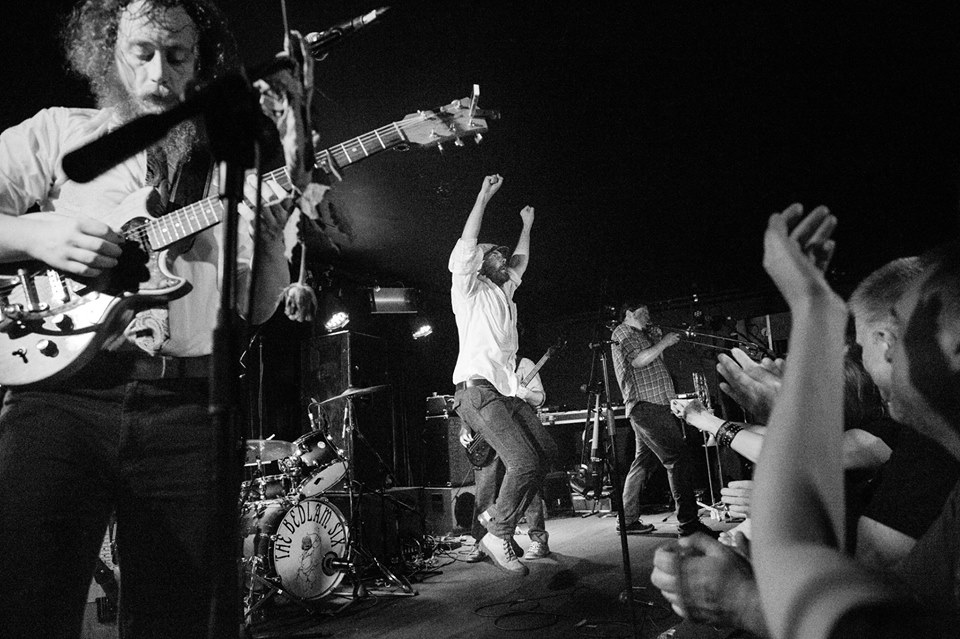
When I stopped gigging I was in no mood to reminisce. I’d been doing this for most of my adult life, but since much of the creative sector doesn’t feel all that adult I decided I wasn’t quite grown up enough to be getting nostalgic. Indeed I was still looking forwards, had a brand new musical to tout and a bunch of ambitious notes for the next three projects. Many times over the years I’d thought and joked and loosely planned on writing a book about life as an independent musician – drawing on personal experiences as well as contemporary industry thinking – but that could wait until it all felt a bit more past tense.
Then seemingly overnight I ran out of steam, just hit a mental wall and lost all interest in actively promoting my work (more about that here). This would have been the perfect time to write that book, while I was still in (or at least near) the thick of things, before the next chapter came along; a way of getting closure on that part of my life – therapy almost. But I had no stomach for picking over the bones of my career so quickly. Everything was too much of a muddle anyway, I needed some distance. A LOT of distance.
One year, five hundred miles and one rescue dog later I have finally begun writing the book and I’m now about a third of the way through the first draft. My new Hebridean life is gaining some structure and it’s become such a pleasure looking back at my time with the Bedlam Six from the safety and distance of a rainy hillside near Loch Dunvegan. The band’s collective decision to quit while we were still friends has placed a real glow on the memories of that decade spent together. What’s more, organising these episodes into a framework for pedagogic discussion puts that nostalgia to work, it all feels a lot more positive.
My book is not about that band though, not really. And it definitely is not an autobiography. It’s a resource for emerging artists trying to manage themselves in the music industries, achieving a balance between creativity and self-promotion, with a sustainable career as the holy grail. It’s not a guide to reach the top, it’s about surviving the middle. The memories serve an educational purpose: each chapter (be it about bookings or money or marketing) features an anecdote from my time as a live performer, sometimes acting as case studies to be analysed in depth, other times just serving to keep the book from becoming too dry and impersonal. I’m really enjoying balancing the wistful circuitous nature of memory with the more rigid forms of academia – like cutting hot water with cold when running a warm bath.
What’s really interesting is the kind of memories that have the greatest definition in my head. The most vivid recollections take place around three to five years into our run, when we’ve stopped doing all the useless indie showcase gigs and have started to get a proper grasp of how things work (but not quite a big enough grasp to actually make a proper living or win the attention of the media). If one takes the ten year span of this band and maps it onto a human life then this tendency to remember things from around a third of the way in conforms loosely to the reminiscence bump theory (though not in a way that I’d make any strenuous case for in sociological or psychological circles). We’re forging our path, asserting our personalities, everything is new, things are making more sense but we’re still relatively naive. The really early stuff is a blur, for like most idiot young bands the gigs themselves are just a brief interval between the drinking sessions and we’re not really thinking about careers or business, just passively assuming some label will drift by and make sense of things on our behalf. At the other end, the later years after our second European tour all jumble into one homogenous tangle – it’s not that I don’t remember things, I just don’t have much to fix those memories onto; the anecdotes can be transplanted between countries and venues almost indiscriminately. Indeed for much of the time between the gigs in this era we’re reminiscing about the last time we played that town/country/festival, pouring over old memories rather than making new ones. The main problem with conjuring up the latter period is that we were all just doing a job. A fun job yes, but no longer a voyage into the unknown, we’d found our niche and were working it. Efficiency is rarely a recipe for funny stories. Neither, for that matter, is success.
So although the book is designed to advise fledgling artists about how to navigate the independent sector, the accidental message is something a lot more sentimental: Enjoy getting it wrong. Enjoy not knowing what you’re doing, enjoy learning the lessons of failure in the company of friends, enjoy those people while you’re still floundering on the margins. The moments that happen in the lawless territories between doing terrible “exposure” gigs and finally achieving a balance between art/business, these are the ones that stick in your mind, the ones that bring warmth to the frosty later years when it all seems so distant.
So if you’re in a band that still hasn’t quite found its way, my advice is don’t be in too much of a rush to get where you’re going. The early wrong turns are worth a thousand straight lines.
___
Dying Of Exposure: A Guide To Failing Well In The Music Industry will hopefully be published in early 2019.



